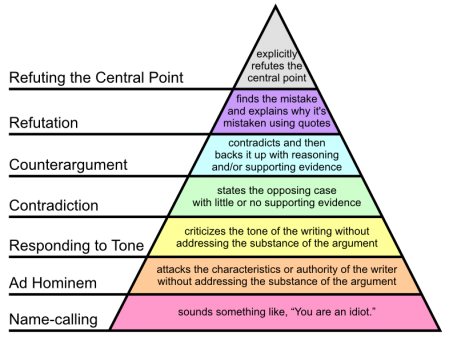With the exception of informed ones, opinions have little use as supporting evidence. – Critically Evaluating the Logic and Validity of Information from Cuesta College.
Cuesta College has a nice but fairly dense webpage on, “Critically Evaluating the Logic and Validity of Information“.
It starts with distinguishing between facts and opinions, goes into evaluating arguments and rounds up with asking critical questions. There’s lots of good information, but it needs to be parsed, broken apart, and condensed for middle school students.
Facts are statements that can be verified or proven to be true or false. Factual statements from reliable sources can be accepted and used in drawing conclusions, building arguments, and supporting ideas.
Opinions are statements that express feelings, attitudes, or beliefs and are neither true nor false. Opinions must be considered as one person’s point of view that you are free to accept or reject. With the exception of informed ones, opinions have little use as supporting evidence, but they are useful in shaping and evaluating your own thinking. [My emphasis]
– Critically Evaluating the Logic and Validity of Information from Cuesta College.
This can be tied in with my previous notes on Paul Graham’s Hierarchy of Disagreement to create a set of lessons on critical thinking and evaluation.

With two kids ready to move into erd kinder (JV and LR), they and AV are going to spend the next semester working on rhetoric. I enjoy the Art of Manliness site. (A while back their history of famous duels was a huge hit.) They had this discussion of rhetoric – http://artofmanliness.com/2010/12/21/classical-rhetoric-101-the-three-means-of-persuasion/ We may bring in a local Cannon Theologian, not to discuss theology, but how to evaluate an argument. I will enjoy reading how your guys handle the process.
Thanks for the excellent link and site (artofmanliness.com). I had not though through it before to recognize how Aristotle’s framework fits in with Graham’s hierarchy: the bottom three levels are pathos; the upper four are logos; and ethos sort of frames the entire argument. I think I’ll amend the diagram to add them in.